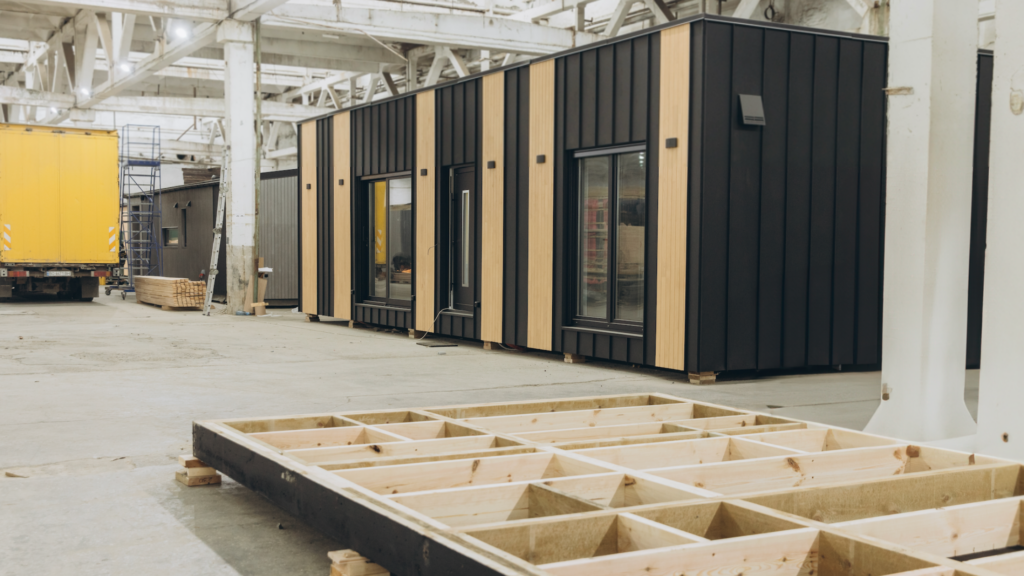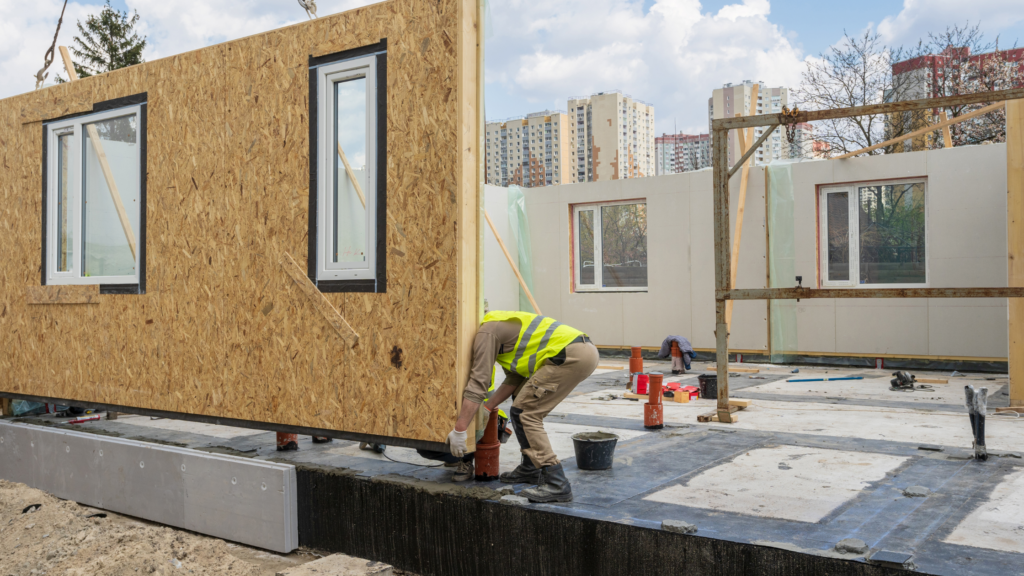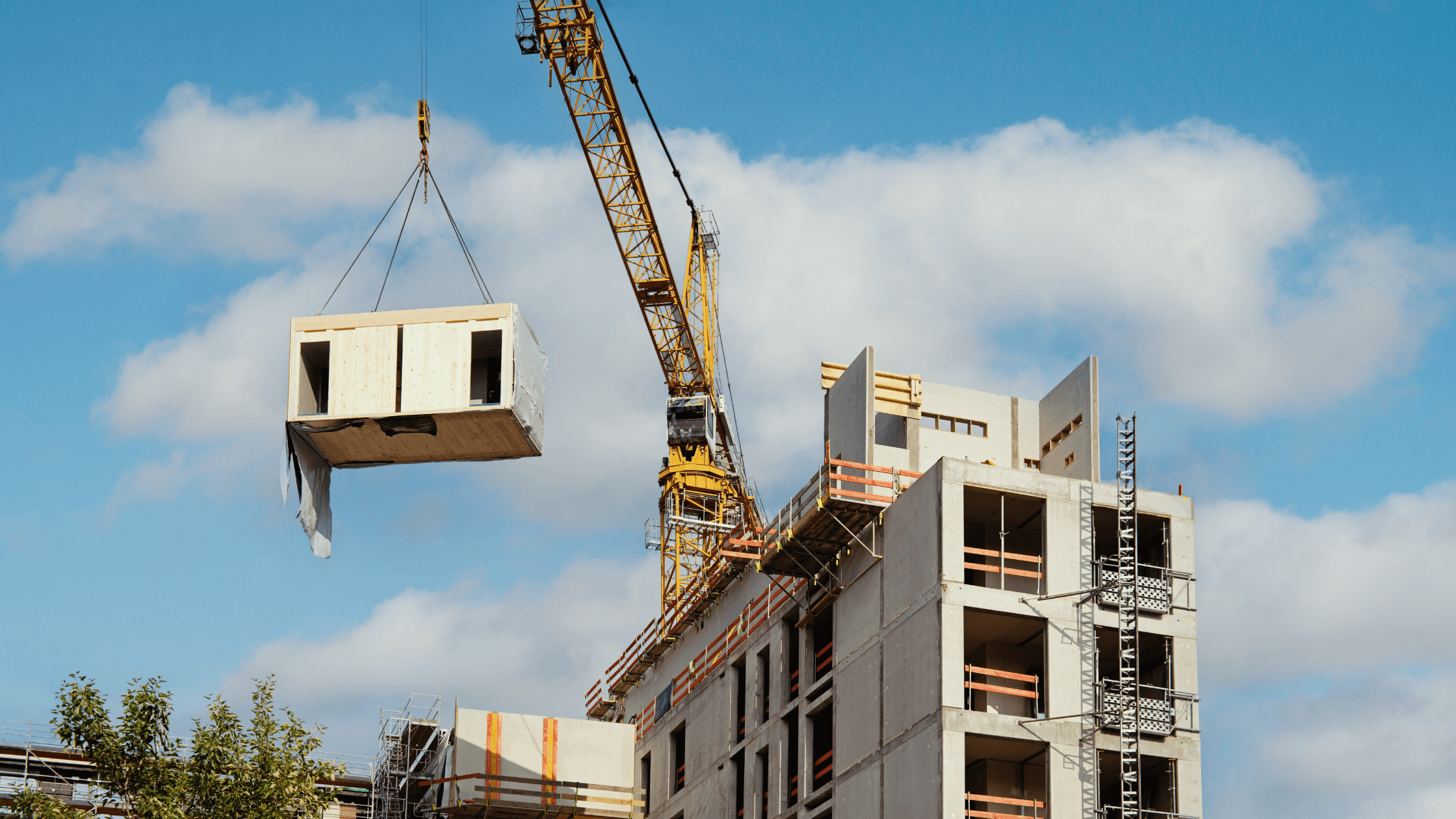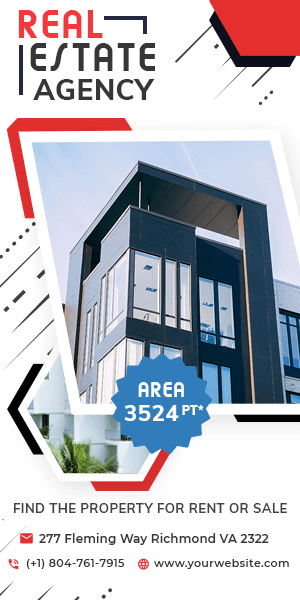Modular housing, where homes are constructed in sections within controlled factory settings and assembled on-site, is gaining traction in the construction industry. This method offers benefits like reduced build times, cost savings, and enhanced quality control. In recent years, a notable uptick in multi-family modular construction has been driven by the need for efficient and affordable housing solutions. Factors such as increased demand for rental properties, sustainability concerns, and housing affordability fuel this trend.
Quick look
- Modular housing involves off-site construction of building sections, which are then assembled on-site.
- Benefits include faster construction times, cost efficiency, and improved quality control.
- The past five years have seen significant growth in multi-family modular projects.
- Drivers of this growth include rising rental demand, sustainability goals, and the need for affordable housing.
- Modular construction presents opportunities for builders to meet market demands efficiently.
The ins and outs of modular housing

What is modular housing?
Modular housing is a construction method in which building components, or modules, are produced in a factory. These modules are then transported to the construction site and assembled to form a complete structure. This approach contrasts with traditional construction, where buildings are erected entirely on-site. For instance, a developer might construct individual apartment units in a factory and then piece them together on-site to create a multi-family complex. This method allows for greater control over building conditions and can lead to more consistent quality.
What benefits does it offer for builders/construction companies?
Reduced construction time
One of the primary benefits of modular construction is its ability to dramatically reduce the time needed to complete a project. Simultaneously producing building modules in a factory while site preparation is underway allows for faster overall completion. With less waiting between different construction phases, builders can hand over finished buildings to clients much sooner than they could with traditional construction methods.
This faster turnaround allows construction companies to complete multiple projects within the same time frame, increasing overall productivity. Builders can take on more contracts, boosting their revenue potential while meeting the growing demand for housing in urban areas.
Cost efficiency
Modular construction offers significant cost savings, making it an appealing option for builders. The factory-controlled process allows for bulk purchasing of materials, reducing the overall costs of raw materials. Labor costs are also reduced, as factory work is more predictable and less reliant on the fluctuating availability of skilled workers.
Additionally, the streamlined nature of modular construction minimizes waste, further contributing to cost savings. Builders can pass on some of these savings to clients, increasing the competitiveness of their pricing or retaining them to improve profit margins. This cost-effective approach allows construction companies to deliver high-quality housing options at more affordable prices, making modular homes desirable for developers and builders alike.
Enhanced quality control
In traditional construction, weather-related delays and unforeseen challenges can often disrupt the building process, leading to potential inconsistencies in quality. Modular construction takes place in a controlled factory setting, significantly enhancing the final product’s quality. Building modules indoors means that construction is unaffected by external factors, resulting in more consistent and precise work.
Factory workers also benefit from well-established processes that ensure every step is carefully monitored and adheres to specific quality standards. This meticulous approach reduces the risk of defects or rework, saving builders time and money. The increased quality also leads to higher client satisfaction, as the final product meets or exceeds expectations, bolstering the construction company’s reputation.
Safety improvements
Modular construction offers a safer environment for workers by moving much of the building process off-site. Unlike traditional construction sites, which are often unpredictable and filled with potential hazards, factory settings are designed to reduce risk. With fewer environmental factors and variables to contend with, workers are less likely to encounter dangerous situations, which decreases workplace accidents and injuries.
The controlled setting also allows workers to use specialized tools and equipment designed to ensure greater safety and efficiency. For construction companies, a better safety record can result in lower insurance premiums and fewer liability claims, improving their financial standing and enhancing their reputation as safe and responsible employers.
Environmental benefits
One of the main things modular construction is increasingly recognized for is its environmental advantages. The precision of factory-built modules ensures that materials are used efficiently, with minimal waste generated during the production process. This reduction in waste helps lower the environmental impact of construction projects, making modular homes a more sustainable construction choice.
Additionally, modular buildings can be designed with energy efficiency in mind, incorporating features such as better insulation and energy-saving appliances. For builders, adopting environmentally friendly practices can be a powerful marketing tool, appealing to clients who prioritize sustainability. By offering eco-conscious options, construction companies can tap into a growing market of environmentally aware customers, gaining a competitive edge in the industry.
Modular multi-family housing on the rise
Over the past five years, there has been a significant increase in multi-family modular construction projects. According to the Modular Building Institute, the multifamily sector accounted for about 23% of the commercial modular output in recent years. This growth is attributed to the method’s ability to deliver housing units more quickly and efficiently.
Looking ahead, the market for multifamily modular and prefabricated housing construction is projected to continue its upward trajectory. Reports suggest that the market, valued at $50.86 billion in 2024, will reach $67.19 billion by 2028, reflecting a compound annual growth rate of 7.2%. This anticipated growth underscores the increasing acceptance and demand for modular solutions in the housing sector.
Why is modular multi-family housing so popular?

Demand for rental housing
Urban areas, especially those experiencing rapid growth, have seen a surge in population over the last decade. As more people flock to cities, the demand for rental properties skyrockets. Traditional construction methods are often too slow to meet this demand, leading to rising rental prices and shortages.
Modular construction, however, offers a solution by enabling developers to build multi-family units faster. The quick turnaround time ensures the market can catch up with the rising demand, providing affordable options and stabilizing rental prices in high-demand areas. Developers who embrace modular construction are better equipped to navigate competitive housing markets and deliver much-needed homes on time.
Sustainability
Sustainability has become a central concern in the construction industry due to increasing environmental awareness. Traditional construction methods are often resource-intensive, generating significant waste and consuming large amounts of energy. Modular construction, on the other hand, reduces waste significantly as materials are prefabricated in a controlled environment. Builders can use eco-friendly materials and design homes with energy-efficient features like better insulation and solar panels.
Modular housing helps meet the sustainability goals of both developers and tenants by minimizing waste and maximizing energy efficiency. As consumers become more eco-conscious, the demand for sustainable housing options continues to rise, making modular construction an attractive choice for environmentally aware developers and renters alike.
Housing affordability
Housing affordability has become a pressing issue, particularly in urban centers, where living costs continue to rise. With home prices outpacing wage growth, many people struggle to find affordable places to live. Modular construction can tackle this crisis by providing a more cost-effective alternative to traditional construction methods. With faster build times and more efficient processes, developers can keep costs lower while maintaining high-quality standards. This enables the construction of affordable housing units that are accessible to a larger portion of the population.
As cities worldwide look for solutions to the affordability crisis, modular construction offers a promising path forward for creating more affordable homes without sacrificing quality or safety.
Cost and time savings
Modular construction is often chosen for its ability to save both time and money. Traditional construction projects can face delays due to weather, labor shortages, and unexpected material costs. However, modular buildings are manufactured in factories, reducing the potential for weather delays and allowing for more efficient scheduling. This controlled environment also helps to minimize errors and improve quality control, leading to fewer costly rework or repairs.
The quicker construction timeline allows for faster returns on investment, which is particularly appealing to developers. Lower construction costs and faster project completions make modular housing an attractive option for both small-scale and large-scale developments, allowing developers to maximize their profit margins while meeting the housing demands of urban areas.
Design flexibility
One key benefit of modular construction is its flexibility in design. Early perceptions of modular buildings were that they were boxy and unimaginative, but modern modular construction offers a wide array of design possibilities. Developers can choose from various module sizes, configurations, and finishes to create multi-family homes that meet the needs of their target market.
Whether the goal is to design luxury apartments or affordable rental units, modular construction allows for a high degree of customization. This flexibility ensures that developers can tailor projects to specific neighborhoods and market demands, making it easier to meet the preferences of potential tenants. With modular construction, builders can create visually appealing, functional, and diverse housing units to match the tastes of different communities.
Improved safety
Construction sites can be dangerous environments for workers due to unpredictable factors such as weather, heavy machinery, and high-risk tasks. Modular construction helps mitigate these risks by moving much of the work into a factory setting, where conditions are more controlled and safer. Workers in these environments can focus on precision and craftsmanship rather than performing high-risk activities outdoors.
Reduced exposure to hazardous conditions results in fewer workplace injuries and enhances overall worker safety. Additionally, by eliminating many of the unpredictable challenges of on-site construction, modular construction helps lower the potential for costly delays and accidents. Developers benefit from improved safety outcomes, reducing their liability and providing peace of mind to both workers and stakeholders.
Opportunities for modular construction
The growing popularity of modular construction presents numerous opportunities for builders and developers. Delivering projects faster and more efficiently allows companies to meet the rising demand for housing in urban areas. Additionally, the cost savings and environmental benefits associated with modular construction can enhance a company’s competitive edge.
As technology advances, the potential for innovation in modular construction expands. From integrating smart home features to utilizing advanced materials, the future of modular buildings is bright. This opens up new possibilities for developers to create more efficient, sustainable, and high-tech living spaces. By embracing these innovations, builders can stay ahead of the curve and meet the growing demand for modern housing solutions.
Bottom line
The rise of modular multi-family housing represents a significant shift in the construction industry. Modular construction offers an efficient solution to address pressing housing challenges, such as the demand for affordable rental housing, sustainability, and the need for faster construction. For builders, embracing modular construction offers numerous benefits, including reduced costs, faster timelines, and better quality control. As the demand for housing continues to grow, modular construction will likely remain a key player in the building industry’s future.
Those involved in construction, development, and architecture will want to stay up-to-date on this trend as it continues to reshape the way we think about housing. To stay current on this and other innovative trends, sign up for our newsletter at Under the Hard Hat and follow us on social media.



2 comments